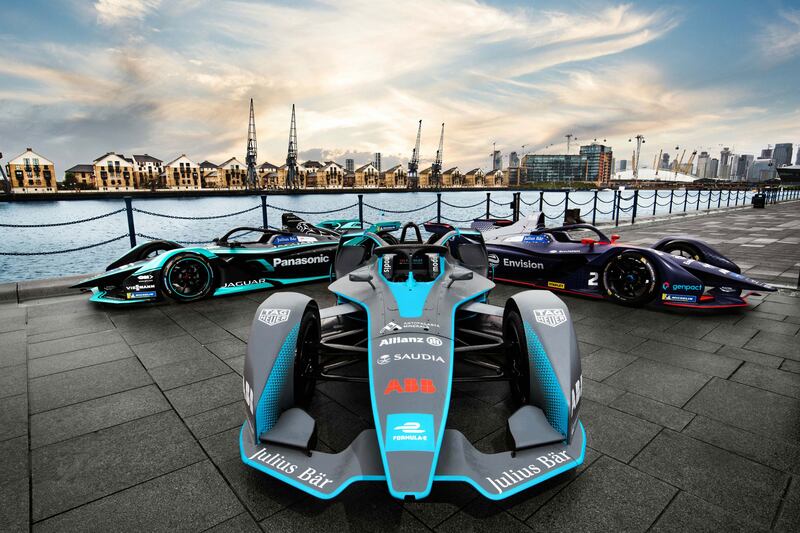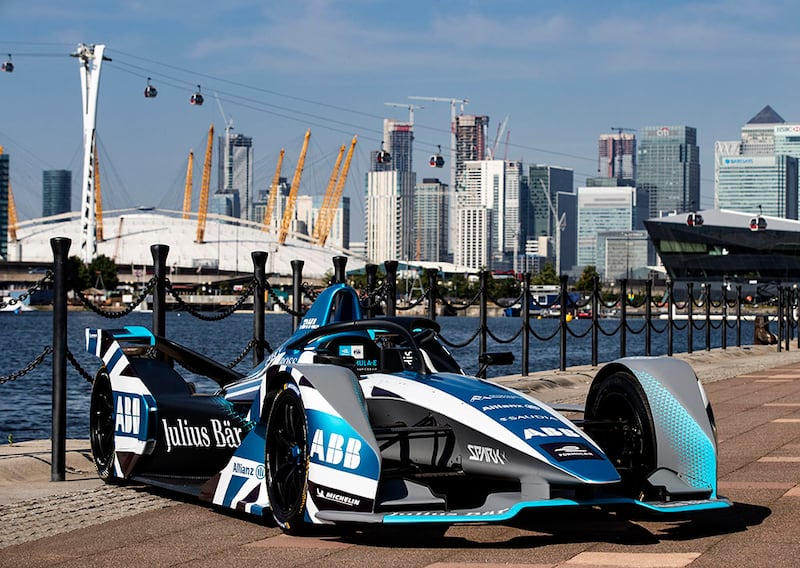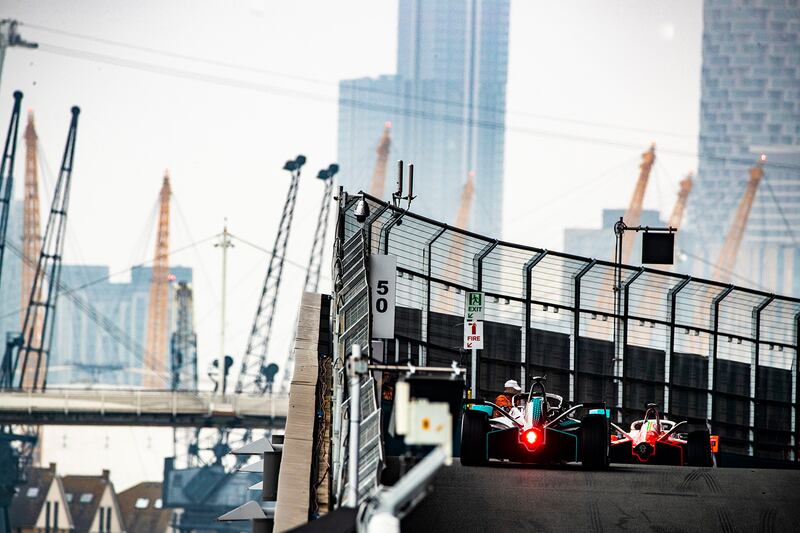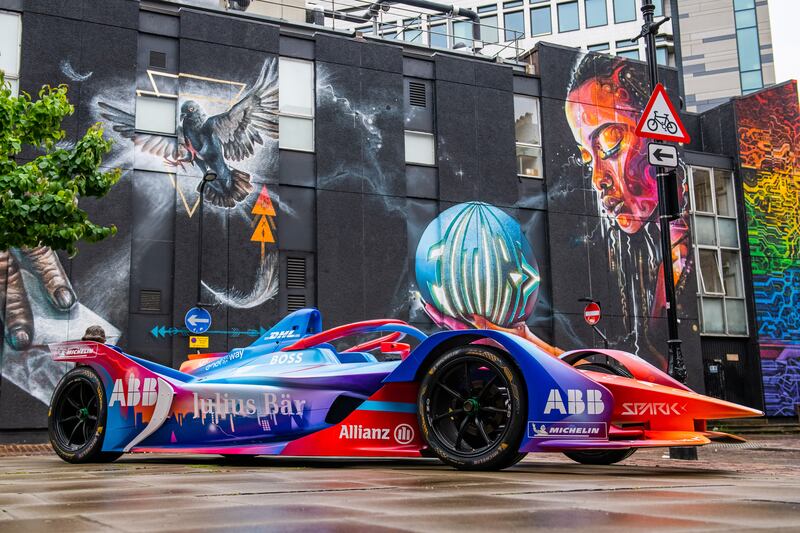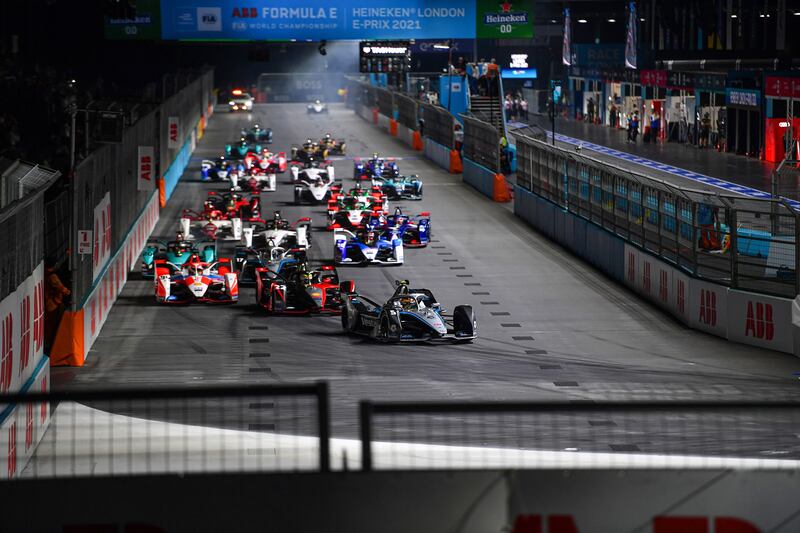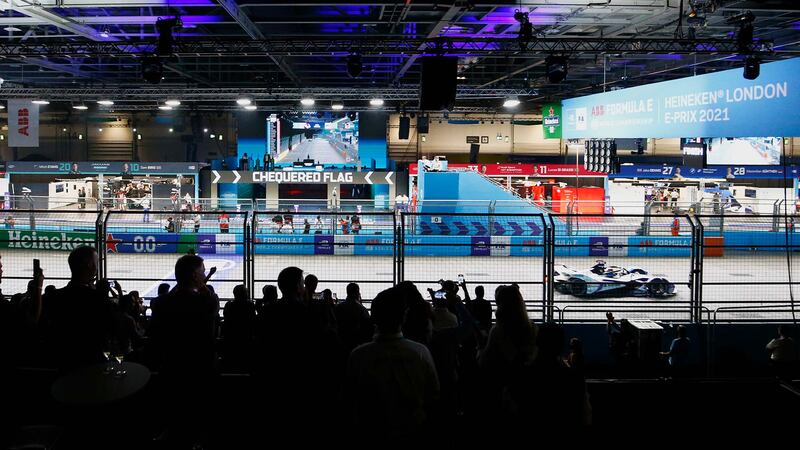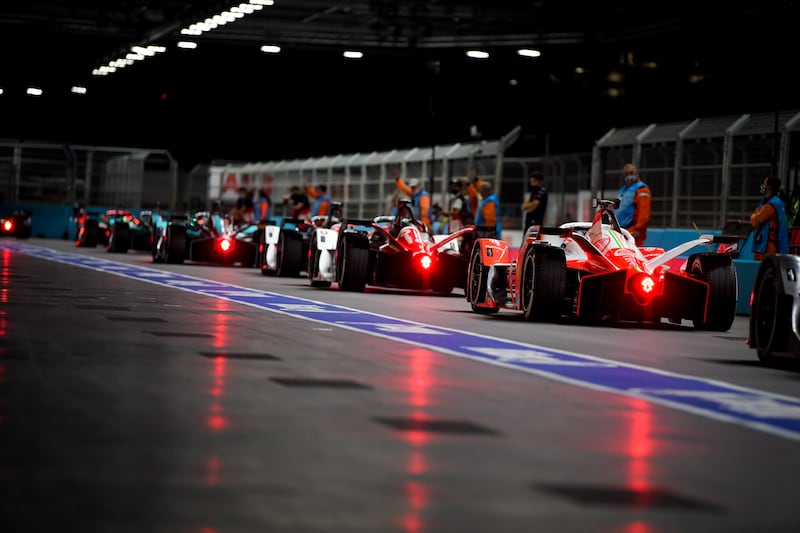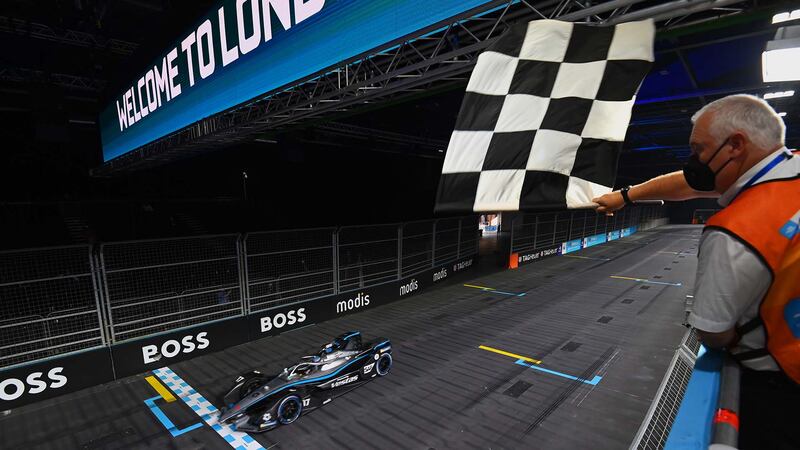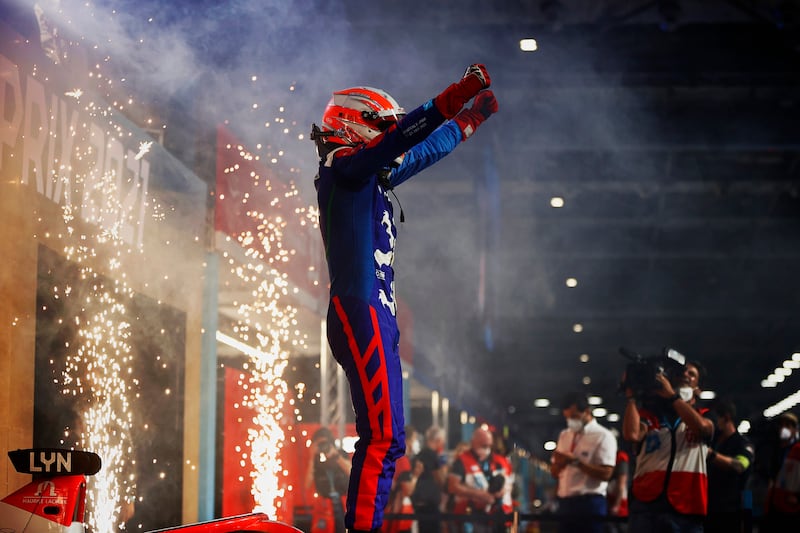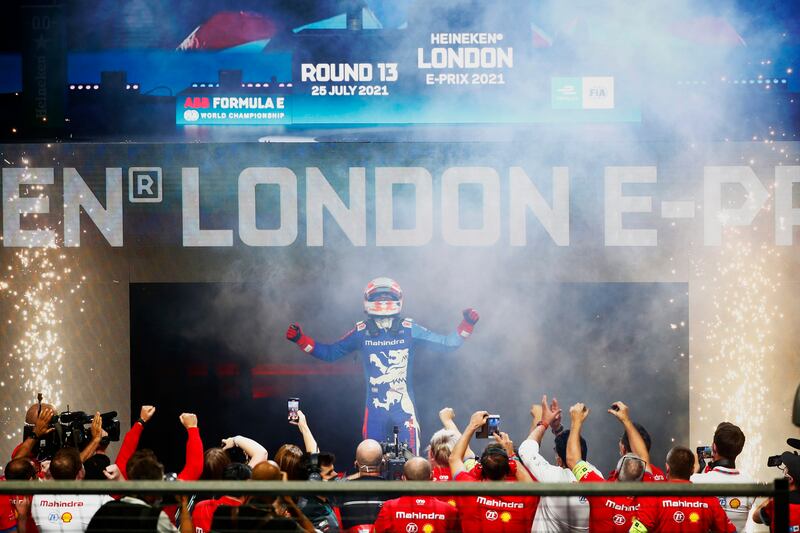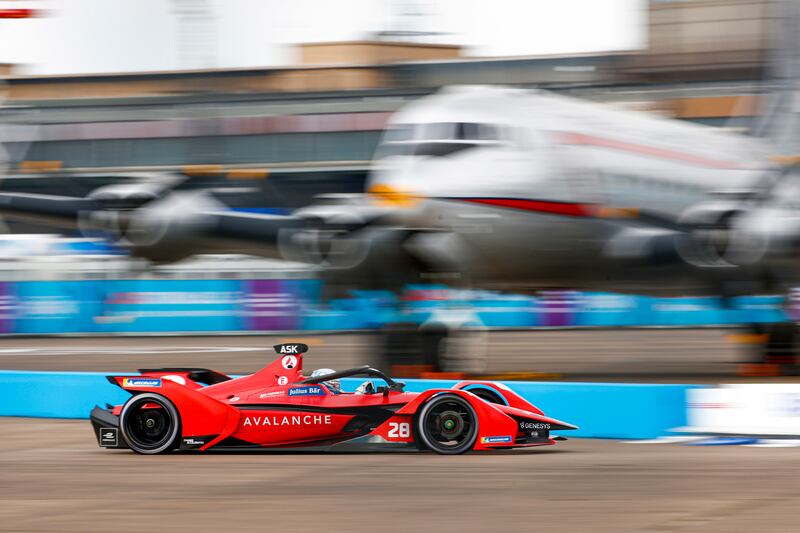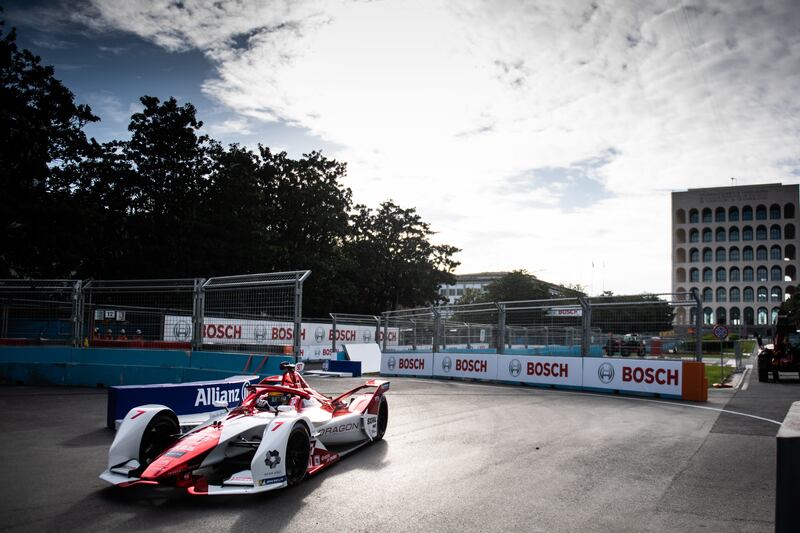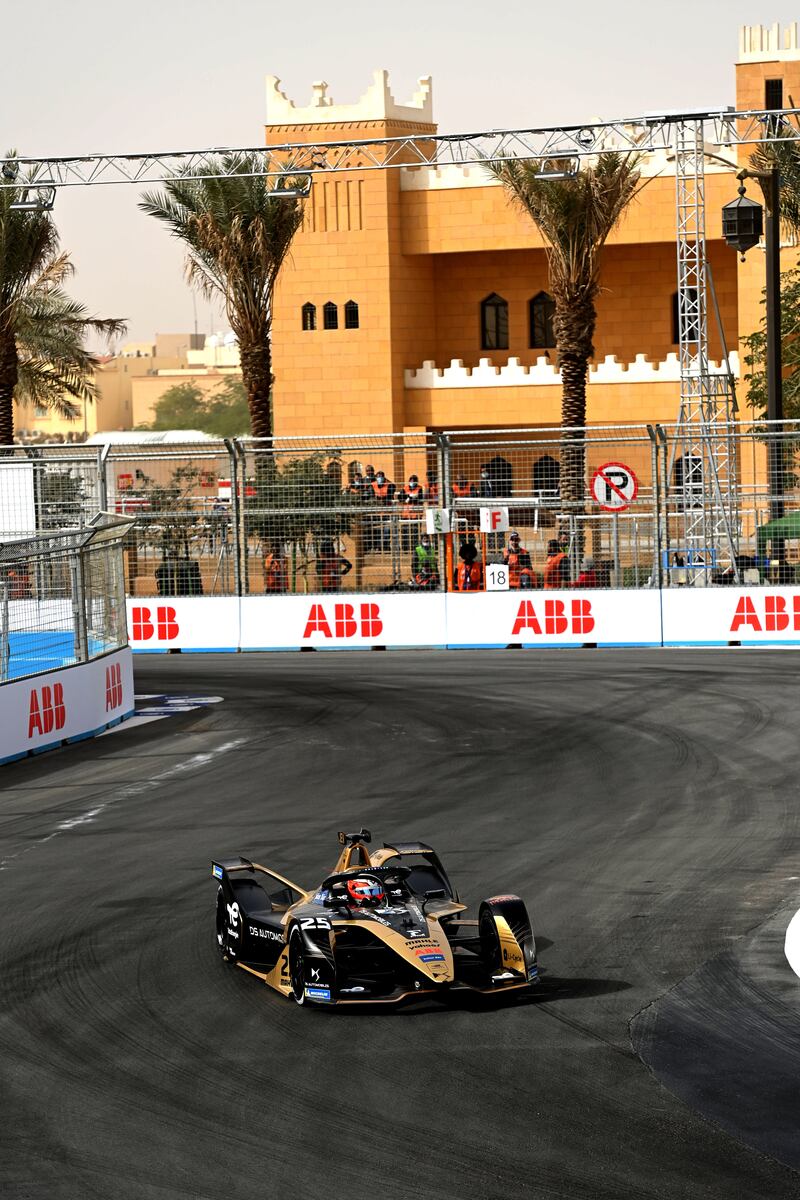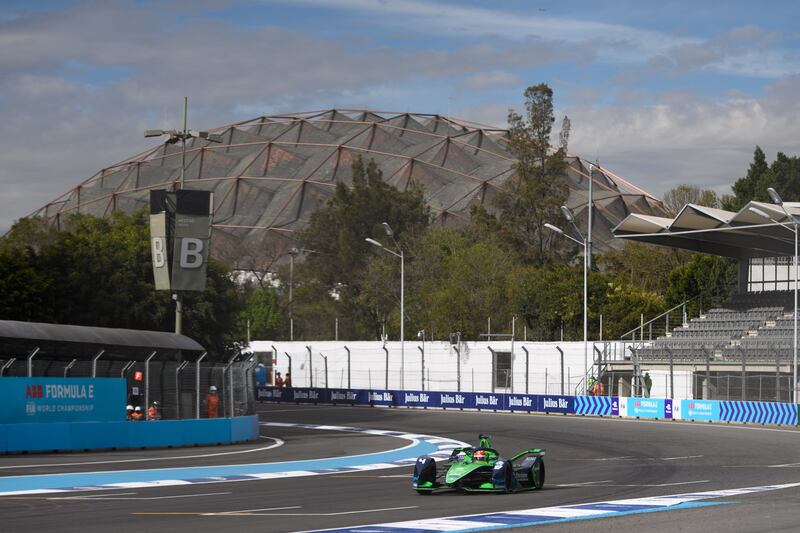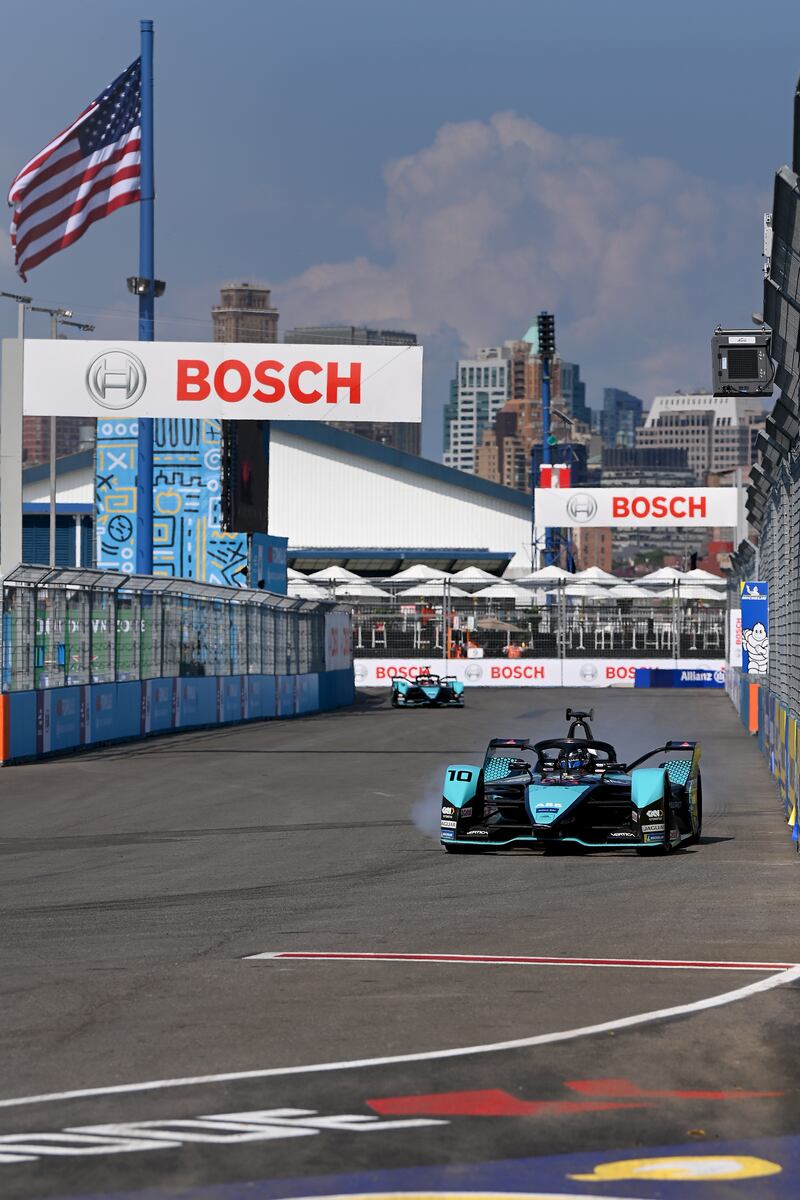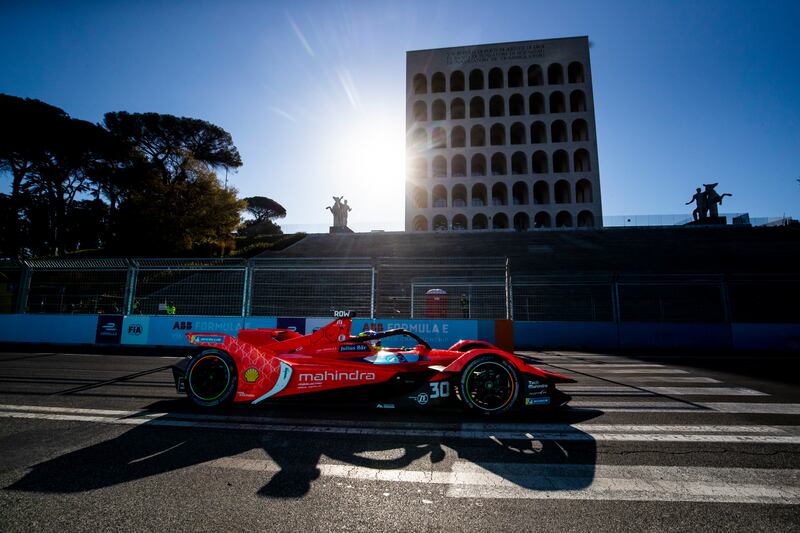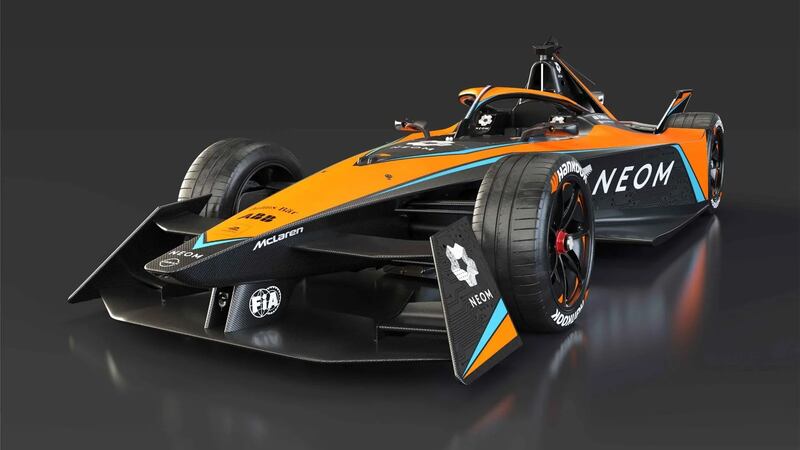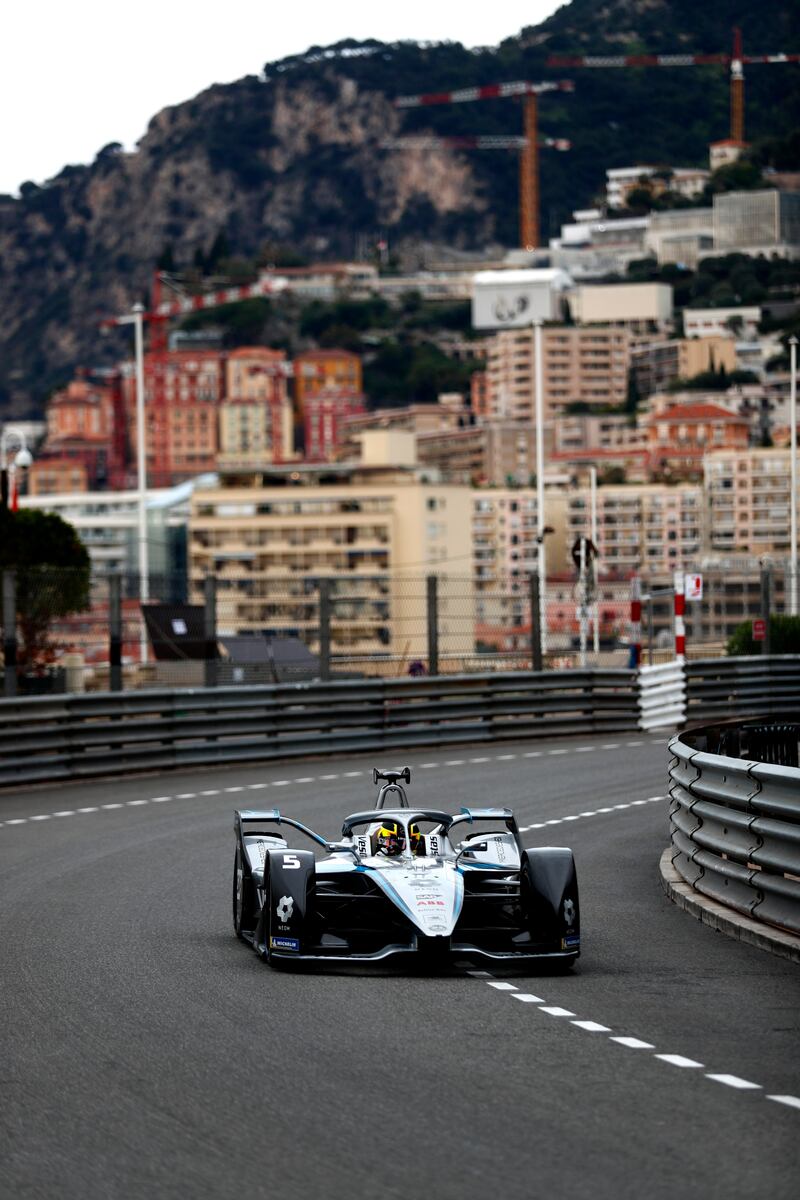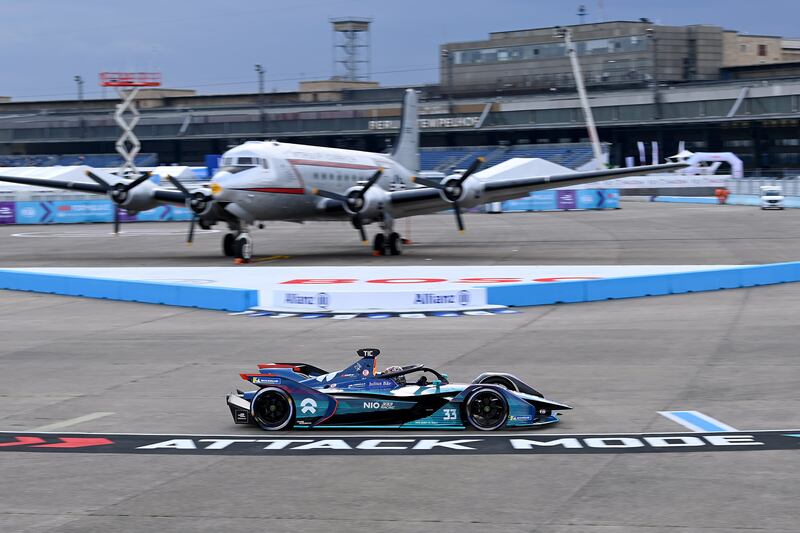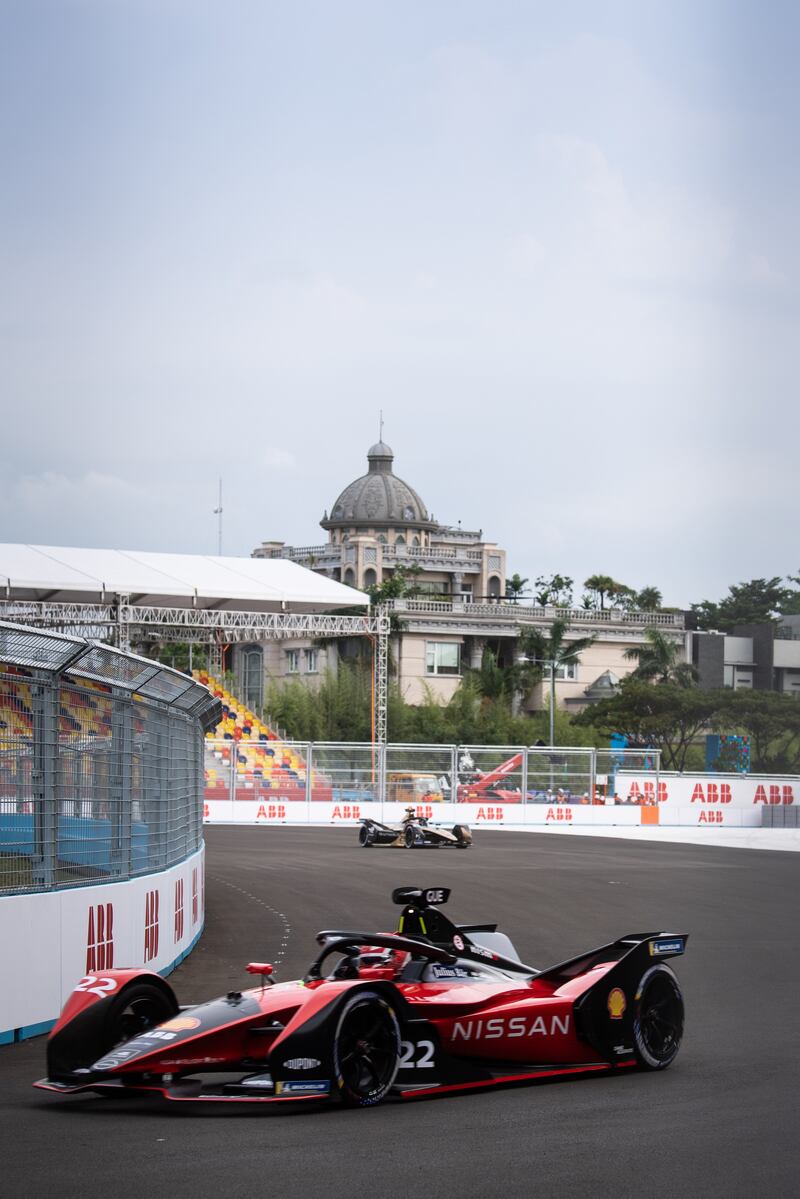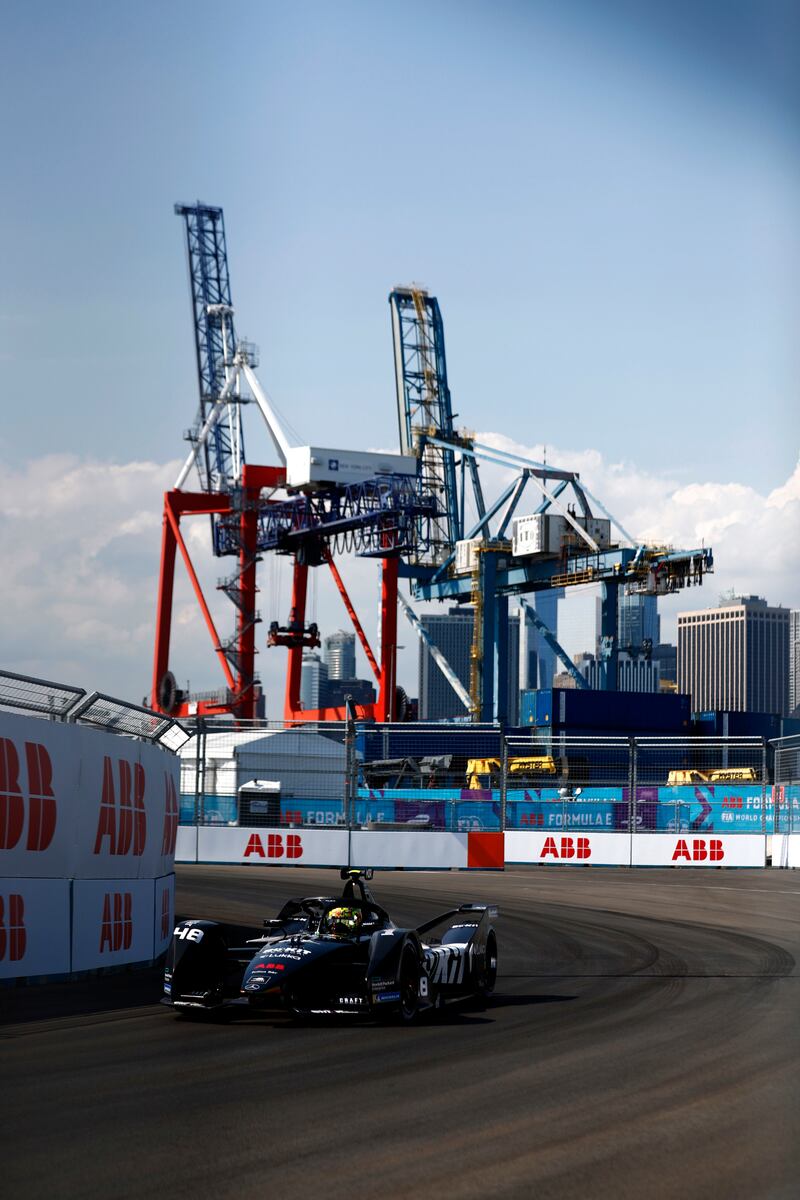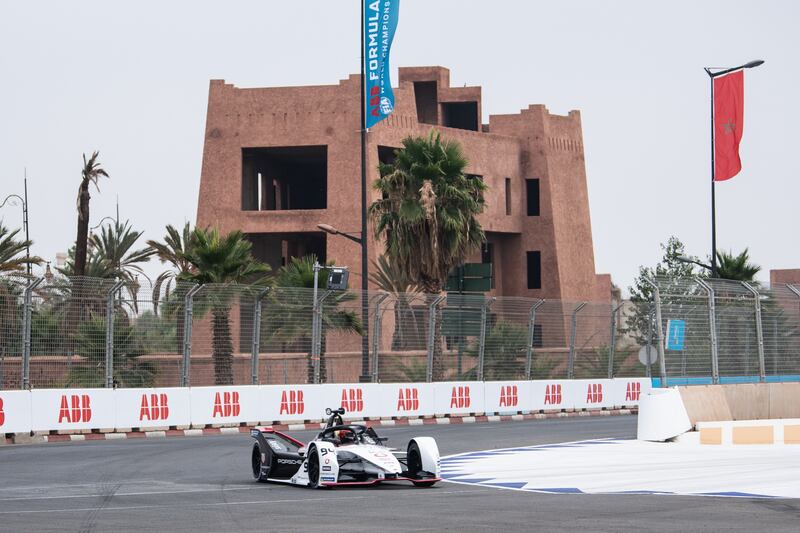The motorsport that has made electric circuits cool buzzes into the UK’s capital this weekend, bringing with it technology that is shaping the present and future of the automotive industry.
About 15,000 spectators will gather at Excel London for the penultimate race of the 2022 Formula E World Championship — a remarkable moment for a venue that during the pandemic was requisitioned as a hospital treating seriously ill coronavirus patients.
During this period it was named the Nightingale, but there is nothing delicate about a Formula E car that can screech round a track at speeds of up to 280kph.
The track is custom built and partly indoors in a symbolic world first for the series that Excel’s head of exhibition sales, Damian Norman, told The National is leading the “biggest revolution in the automotive industry for decades”.
How London ExCeL created world's first indoor-outdoor racetrack
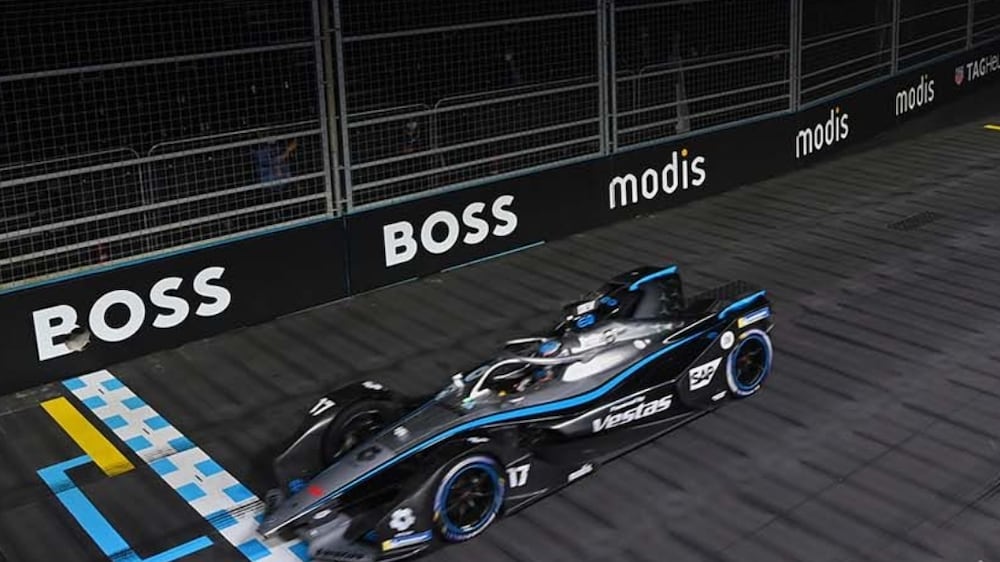
Those behind Formula E would not disagree with his assessment, having conceived it as a galvanic force in society’s shift from the internal combustion engine to electrified transport.
“Supporting the adoption of electric vehicles globally is the main reason the championship was created,” Julia Palle, Formula E sustainability director, told The National.
The proof is in the pudding, and the number of electric car models in the market has increased sixfold since Formula E's first season in 2014, with more than 175 different versions available in Europe.
Meanwhile, latest data shows sales of electric vehicles doubled their market share in 2021.
Formula E's software kings
Car makers including Porsche, Jaguar and Mercedes have looked to Formula E as a test bed in which to develop cutting-edge technology that can be fed straight back into the factory or forecourts when cars are serviced and receive software updates.
“Motorsport is a fantastic platform to advance technology … and we've made very sure the technology used in the cars that are raced on track can [very quickly] be transferred to the car that you and I will be driving,” Ms Palle said.
For the French Formula E maker DS, the very longest this tech transfer takes is an “amazing” four years, she said.
With Formula E being a highly computerised affair, the rapid pace of innovation is most seen in software.
“Jaguar was saying a couple of months ago it created a software update for all their I-Pace customers, which directly came from what they had learnt in the [Formula E] garage,” Ms Palle said.
Going back further, Formula E was the crucible for the very concept of Jaguar's all-electric SUV I-Pace in 2018, inspiring its temperature and torque management.
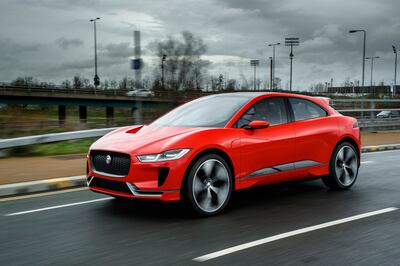
“It is like a real-world test, it’s a fast-paced laboratory,” said Phil Charles, technical manager at the Jaguar TCS Racing Formula E Team.
"When you compete with 11 teams that are trying to beat you every day, you push the technology further."
His colleague, race engineer Jack Lambert, sees the championship as “a complete and utter technical demonstrator of what the future of mobility looks like”.
Battery range objections overcome
Transforming technology is as much about changing societal perceptions as it is about changing performance on the track, and one commonly raised objection to electric vehicles is their battery range.
Formula E’s evolution shows these concerns are not insurmountable.
“If you look back at the beginning of Formula E … we used to have to change cars in the middle of the race,” Ms Palle said.
“That's why we took four years of research and innovation to make sure that the second generation of car had double the battery capacity and hence double the range.
“The championship wouldn’t be relevant if each generation of cars weren’t trying to solve a technical issue that the consumer is encountering.”
In terms of range, the exemplar is the Nissan Leaf, among the best-selling EVs of all time.
Since 2015, its battery capacity and range have tripled compared with the original model, thanks to on-track analysis.
If range anxiety is the primary qualm the public has with electric vehicles, a lack of charging infrastructure and glacially slow charging times come a close second and third.
Formula E is aiming to dampen these concerns in the 2023 season.
“The reality is the cars can last long enough on the streets to give us the ability to [do things like] go on holiday, but the difficulty is finding a fast enough charging infrastructure,” Ms Palle said.
“We will be showing that these ultra-fast charging technologies are available and can be incorporated into a city’s infrastructure, and then it’s up to [authorities] to test and develop this infrastructure.”
One aspect of Formula E that city authorities won’t be incorporating into their transport networks is its hell-for-leather speeds.
The current Gen2 cars can hit 284kph but the Gen3 versions lined up for next season will be able to top the 320kph mark.
Formula E Gen2 cars - in pictures
Formula E: the next generation
Previous incarnations of Formula E vehicles have operated on the principle of incremental improvements; Gen3 cars are seen as a technological step change.
They have been designed to show that high performance and sustainability are not mutually exclusive, delivering about 95 per cent power efficiency from the electric motor.
They also double the regenerative braking capacity during races and charge at an ultra-fast 600kW — almost twice the power of the most advanced commercial chargers in the world.
Formula E’s influence on technological developments is incontestable, but perhaps slightly less clear cut is exactly how much it is influencing sales of electric vehicles in the private market.
While German luxury brand and Formula E participant Porsche could never be seen as a harbinger of the predilections of the masses, its sales figures in 2021 indicate a positive correlation.
For the first time ever, its pure electric Taycan outsold its signature 911 sportscar — the former notching 41,296 sales worldwide; the latter 38,464.
Last week it was announced Volkswagen chief executive Herbert Diess is stepping down to be replaced by Porsche chief Oliver Blume in a move that could be interpreted as an endorsement for the success Mr Blume has had with the Taycan.
The link between Formula E and retail sales may be somewhat suppositional for now, but there is no querying the championship’s commercial pull.
Given its status as an environmental and sustainable bellwether, brands are scrambling to get involved and bask in its reflective glory.
Excel Formula E London
Host of this weekend’s race, Excel London, is no different, Mr Norman said.
“{Formula E] has a very different profile of audience to your traditional motorsport fan because it is a much more family-oriented event and is much more inclusive,” he said.
“This is reflected in our kids-go-free policy, as well as having grandstand tickets starting at about £40 [$48]. When you compare that to Formula 1, it's incredibly accessible.”
Comparisons with Formula 1 are inevitable for any race series with the “Formula” prefix, and while Mr Norman was hesitant to say Formula E will gain parity with the big beast, he is confident the series is “moving in the right direction”.
“Where's the technology going is very exciting … Formula E is the pinnacle of electric technology in cars and new manufacturers are showing that,” Mr Norman said.
“If you think about why Formula One came about in the first place, it was for manufacturers to be able to sell their technology and demonstrate they had brilliant engineers designing their engines.
“And if you look at the brands involved in the Formula E Gen3 car that's coming next year, McLaren Maserati entering the series will garner huge interest.”
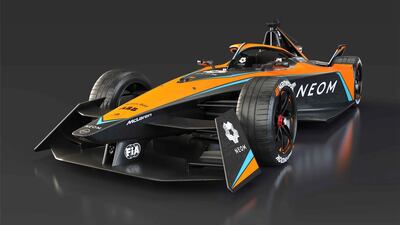
Where there is absolutely no comparison between Formula E and Formula One is in their respective carbon footprints.
Formula One stomps around the world like King Kong whereas Formula E treads as lightly as a lamb in spring.
Sustainable firsts
This is hardly surprising given sustainability at the heart of Formula E’s inception, and since then it has racked up an impressive catalogue of world firsts.
Not only was it the first race series to have a net-zero carbon footprint from the off, it was also the first to achieve third party ISO20121 certification.
This certification is the gold standard and ensures events are managed in a sustainable way, promoting social inclusivity, economic prosperity and environmental protection
Formula E was a signatory of the UN Framework Convention on Climate Change's Climate Neutral Now initiative in 2020 and is an adherent to the UNFCCC's Sports for Climate Action Framework, supporting all levels of society to take climate action to achieve a climate-neutral world by mid-century, as enshrined in the Paris Agreement.
And if all of this does not burnish its impeccable environmental credentials, Formula E was the first championship to be awarded the FIA’s Environmental Accreditation at Three-Star level
Many of these firsts redound to the credit of head of sustainability Ms Palle, who modestly said it took “quite an effort” on behalf of her team.
The foundation stone of their success has been to adopt a local approach to a global product, one example being the food served up at race events.
“We ask vendors to source food and ingredients locally as part of our philosophy in what we call community engagement,” Ms Palle said.
“It’s really about how we customise to the local culture, so for example here at Excel we've done a lot of work with their local charity partners, ensuring a little as possible goes to waste.”
High voltages, high principles and high ambitions: more and more are likely to get on the Formula E-wagon as the world starts to realise its electric dreams.
